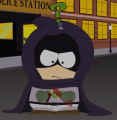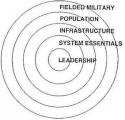Neat article and with a nod to Ken White too.
On a very quick thought have a look at the Trucial Oman Scouts, it had a short history and has disappeared. On Google there are numerous hits to veteran memories and of course this:http://en.wikipedia.org/wiki/Trucial_Oman_Scouts
Their role appears to be a very light defence capability, in (a then) inhospitable terrain and hard climate. More a gendarmerie?
A host of British Imperial era formations were called scouts etc, it was only in WW2 that their recce and raiding capability was developed in a few places, such as Burma.
There is a good deal of nostalgia about these formations, principally on the North-West Frontier and the once famous (Jordanian) Arab Legion.















Bookmarks